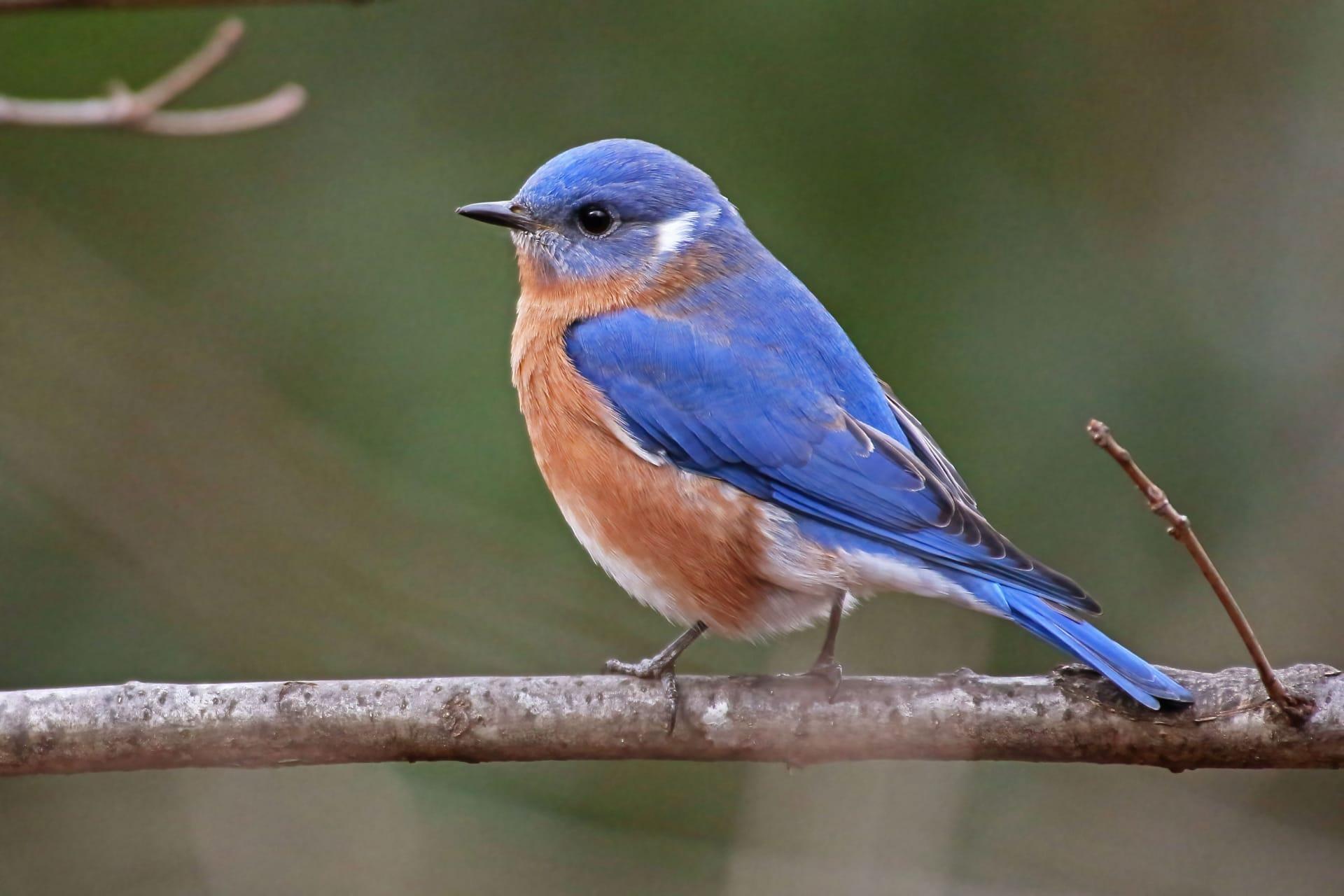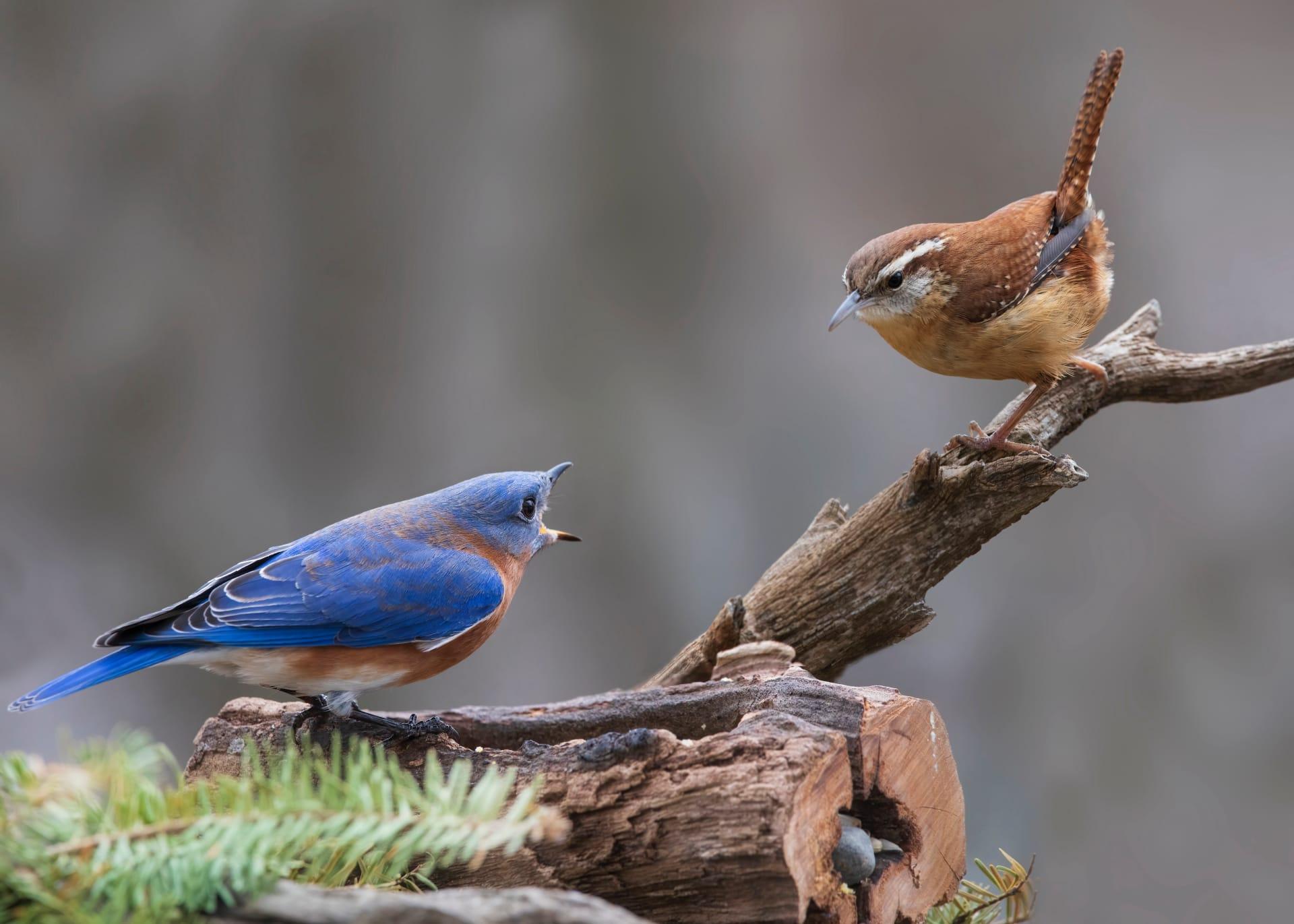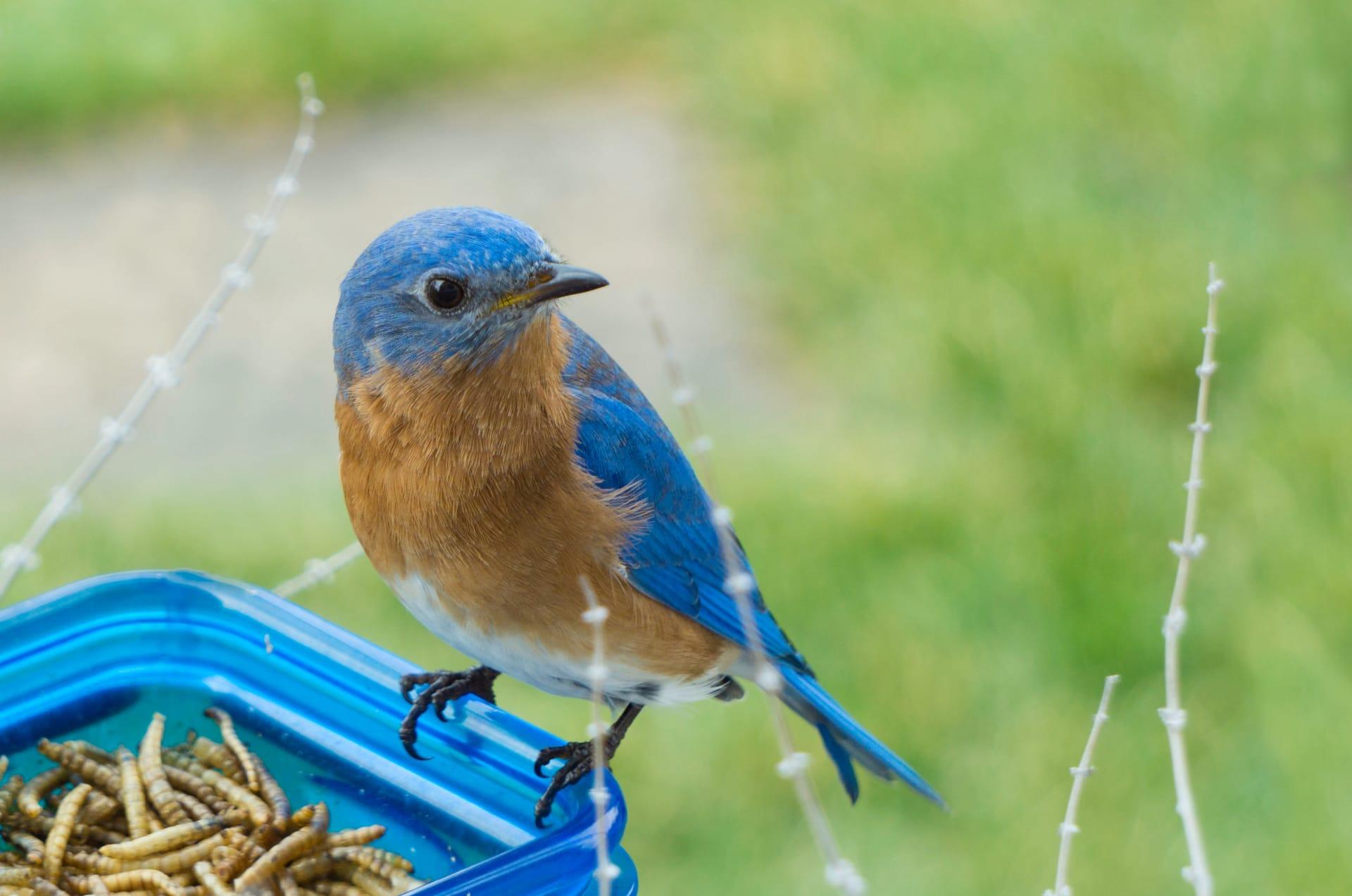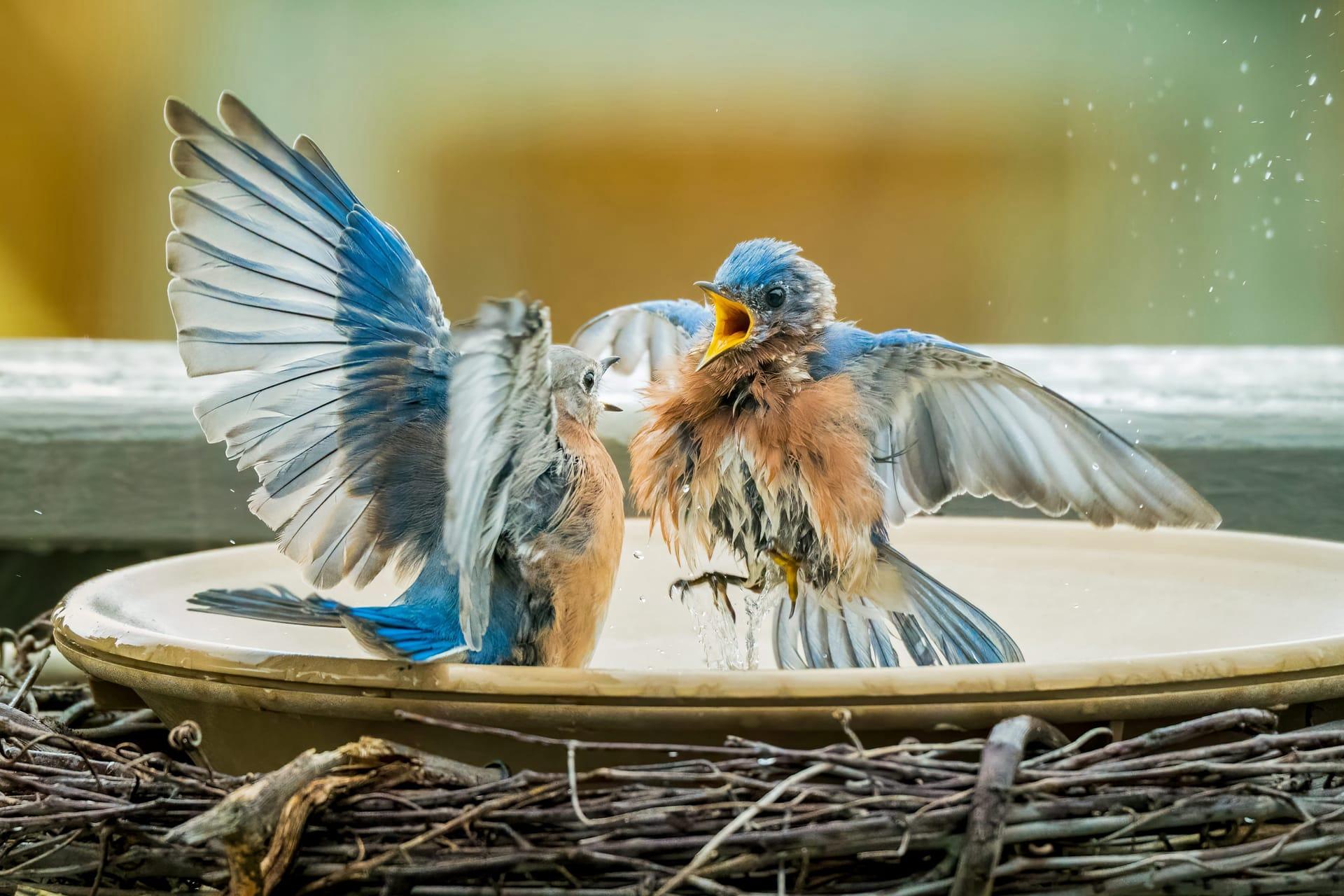1
Bluebirds are known for their vibrant colors, but what's fascinating is how these colors are created. Unlike many birds that derive their colors from pigments, the blue in bluebirds comes from the structure of their feathers. Tiny air pockets and keratin layers in their feathers scatter light in a way that makes them appear blue. This phenomenon, known as structural coloration, means their blue hue can look more vibrant and change intensity in different lighting conditions. The exact shade of blue can vary among species, ranging from azure to deep indigo.
Another intriguing fact about bluebirds is their nesting behavior. They are cavity nesters, preferring natural holes in trees or nesting boxes provided by humans. The male bluebird plays an active role in selecting the site, often choosing cavities about 4 to 6 feet off the ground. Once a site is chosen, the female takes over, meticulously building the nest with grass, pine needles, and sometimes even feathers or hair. The choice of nesting site is crucial for their survival, as it provides protection from predators and harsh weather.

2
Bluebirds have a unique way of hunting for their food. They primarily feed on insects and berries, employing a method known as "hover hunting." The bird will spot its prey from a perch, like a branch or fence post, then hover in the air before swooping down to snatch the insect. This technique is quite effective and showcases their agility and precision. They also have excellent vision, which aids them in detecting and capturing prey from a distance.
Another fascinating aspect is their migration patterns. Not all bluebirds migrate, but those that do show remarkable navigational skills. The Eastern Bluebird, for instance, can travel over 2,000 miles from Canada to Mexico during the migration season. These birds rely on a combination of the Earth's magnetic field and visual landmarks to find their way. This incredible journey is undertaken annually, with many returning to the same breeding grounds each year.

3
Bluebirds are not just beautiful; they also play a vital role in ecosystem balance. They are natural pest controllers, consuming large quantities of insects daily, including beetles, caterpillars, and grasshoppers. A single bluebird family can eat thousands of insects during the breeding season, benefiting agriculture by reducing the need for pesticides.
Communication is key in the life of a bluebird. They use a variety of calls and songs to communicate. Their vocalizations can indicate alarm, attract a mate, or establish territory. Each call has a specific purpose and can vary in tone and pattern. For instance, their mating song is a series of soft, melodious warbles, while their alarm call is a sharp, short chirp. Bluebirds can even modify their calls in response to different situations, demonstrating a level of complexity in their communication.

4
Regarding reproduction, bluebirds can have multiple broods per year, typically two or three. The female lays between three to seven pale blue or, occasionally, white eggs per brood. These eggs are about the size of a dime and take around 14 days to hatch. After hatching, both parents work tirelessly to feed the chicks, which are ready to leave the nest in about 15-20 days. This rapid development from egg to fledgling is vital for their survival, as it reduces the time they are vulnerable to predators.
Bluebirds are also known for their strong sense of community and cooperative behavior. In some cases, young bluebirds from a previous brood will stay with their parents to help raise the next generation of chicks. This behavior, known as cooperative breeding, is relatively rare in the bird world. It provides extra assistance in feeding and protecting the young, increasing their chances of survival.

5
Bluebirds have adapted well to human-altered landscapes. They readily accept nesting boxes, which have played a significant role in their population recovery since the mid-20th century. Conservation efforts, including the establishment of bluebird trails—series of nesting boxes placed at regular intervals—have helped increase their numbers. These efforts are crucial as natural nesting sites have become scarce due to deforestation and competition from other cavity-nesting birds.
The lifespan of bluebirds is another interesting aspect. In the wild, they typically live 6 to 10 years, but the average lifespan is lower due to various factors like predation and disease. The oldest recorded Eastern Bluebird lived to be 10 years and 5 months old. This relatively long lifespan, compared to other small birds, is attributed to their adaptable nature, effective parenting strategies, and the support of conservation efforts that provide safe nesting environments.